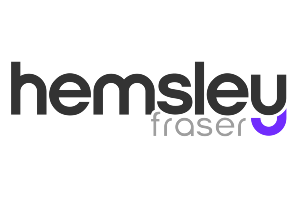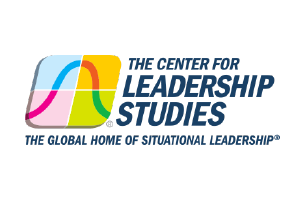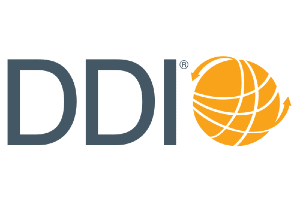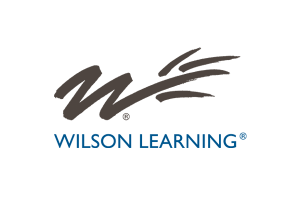Conflict is inevitable, even in organizations that strive to build a strong company culture. Whether it’s an ongoing personality clash between two team members or a lack of cross-functional project alignment, there will always be times when people don’t agree.
The good news is that conflict resolution is an area that can be actively developed through training. With this crucial skill set under their belts, your leaders can quickly get to the root of any workplace issue and find a path forward — so everyone can return to doing what they do best. Most importantly, they can ensure everyone involved feels seen, heard, and understood and reduce the likelihood of conflict arising again.
What Is Conflict Resolution — and Why It Matters in the Workplace
Conflict can occur in any area of our lives — from our friendships to our romantic and family relationships. Humans are complex creatures with rich interior worlds and strong emotions that can often overtake logic. However, the difference with workplace conflict is that unlike in your personal life, you can’t choose to “break up” or distance yourself from a colleague or manager. So long as you choose to stay at that organization, maintaining a civil and professional relationship with that person is crucial.
To define workplace conflict resolution, it’s important to first understand what constitutes a “conflict.” One major misconception is that conflict is the same as a disagreement; however, this is not the case. In teams that work together closely, it’s normal to question things, have healthy debates, and bounce ideas back and forth. These disagreements can be extremely valuable for sparking innovative ideas and fostering mutual understanding on the team. However, when emotions get involved, this is a sign that things have escalated into “conflict” territory.
The includes project disruptions, absenteeism, burnout and high turnover. So, it’s not hard to imagine how leaders who know how to resolve differences can bring significant competitive advantages to organizations. Some of the benefits of conflict resolution training include improved productivity and creativity, faster decision-making, better morale and strengthened relationships.
10 Essential Conflict Resolution Skills
Like most soft skills (interpersonal skills that help us relate effectively to others), conflict resolution is not just one standalone skill set. Rather, it’s a combination of smaller leadership and communication skills that help individuals better navigate friction and reach a place of understanding. These include:
1. Active listening
In any conflict, each party has unmet needs and wants bubbling underneath the surface. Active listening — that is, giving that person your undivided attention (including eye contact) and asking clarification questions based on what you’ve heard — is the best way to bring these underlying needs to the forefront of the conversation.
2. Empathy
Being able to imagine yourself in someone else’s shoes is essential for defusing tense situations. While some people are naturally more empathetic, this skill can be actively developed by adopting the mindset of “seeking to learn, not to win”.
3. Validation skills
Closely related to empathy, validation is the ability to make someone feel heard and understood without necessarily agreeing with their viewpoint. Simply recognizing someone’s internal experience as being acceptable and valid goes a long way in building trust and rapport.
4. Emotional regulation
When our emotions reign during a conflict, we will likely say something we regret or communicate ineffectively. To prevent disagreements from escalating, it’s important to remain calm and level-headed; know when to take a break and return to the discussion later.
5. Rational thinking
It can be challenging not to get emotionally involved when you’re close to a situation. Taking a step back and looking at the objective facts of the situation is an indispensable skill that will help you reach a more effective resolution.
6. Cognitive flexibility
- Scott Fitzgerald famously wrote: “The test of a first-rate intelligence is the ability to hold two opposing ideas in mind at the same time.” While staying loyal to our perspectives and biases is easy, being open to new ways of doing things will likely lead to more positive outcomes.
7. Patience
Interrupting or rushing someone is one of the fastest ways to make them feel invalidated and disrespected during conflict situations. Giving them the space to gather and communicate their thoughts is vital for preserving the relationship.
8. Assertive communication
Being clear and direct while considering other people’s feelings is an art. Kim Scott’s “Radical Candor”model is a helpful way to approach this: state your viewpoint directly while also caring about the individual personally (and showing as much).
9. Problem-solving
As the name suggests, the ultimate goal of conflict resolution is to find a path forward that all individuals are happy with. The ability to assess the situation, define the problem, ideate options and implement a plan will serve you well when conflict arises.
10. Negotiation
During a conflict, there will likely be times when you need to sacrifice some of your wants for the greater good. Knowing what’s a priority for each party (and what they’re willing to be flexible on) will help you negotiate far more effectively.
Honing Your Conflict Resolution Skills: Techniques for Improvement
Even though 85% of employees have experienced some kind of conflict in the workplace, 60% have never received any training in this area. The key is to invest in developing that skill set before conflict arises — not as a knee-jerk reaction when tensions are already high. This might involve:
- Self-assessment exercises: Understanding yourself and others is crucial for getting to the heart of conflict. Questionnaires that delve into team members’ motivational traits and communication styles will help resolve team conflict by uncovering what’s driving behavior in the workplace.
- Role-playing scenarios: As with any skill, practice makes perfect when it comes to conflict management. Consider running workshops where you simulate common conflict areas (for example, a junior employee feeling micromanaged by their supervisor) and discuss ways to resolve them.
- Mindfulness training: Your leaders must have a toolkit they can draw from when tensions rise. This might involve the STOP technique from CBT, journaling or a loving-kindness meditation (particularly useful for fostering empathy).
- Continuous learning and skill development: Conflict resolution isn’t a “one-and-done” endeavor. It’s essential to foster a team culture where employees feel empowered to tackle conflict head on through ongoing training and progress check-ins.
Real-World Application: From Theory to Practice
In an ideal world, skilled leaders would be able to seamlessly follow the American Management Association (AMA)’s five-step process to conflict resolution:
- Step one: Define the source of the conflict.
- Step two: Look beyond the incident at other contributing factors.
- Step three: Request acceptable solutions from both parties.
- Step four: Identify solutions both individuals can support.
- Step five: Reach an agreement.
Unfortunately, things aren’t always quite so straightforward in reality. In a time where many organizations are remote or hybrid, much of our communication occurs via virtual channels. In virtual environments, an innocuous comment can easily be misinterpreted and blown out of proportion without the added context of verbal cues, facial expressions and body language.
Artificial intelligence (AI)-powered communication and collaboration tools can help bridge miscommunications early on. These tools can be connected to your team’s messaging and video conferencing software so they can get real-time guidance on the best way to deliver constructive criticism to a specific colleague. These tools also capture powerful insights about what motivates each team member, which proves invaluable when leaders need to step in to mediate.
As an internal coaching lead, Sarah Nanclares uses this data to supercharge conflict resolution at design company Canva.
“I work with people in company-critical departments, such as engineering, design, and product, when they can’t see eye to eye,” says Nanclares. “That’s when I bring them in together, and the data helps people and teams rise above the emotional aspect of the situation and into “understanding land,” says Nanclares. “We’re moving away from ‘right and wrong,’ which allows us to have much more constructive conversations about behavior.”
By equipping leaders with the right training and conflict resolution tools, they will be well-positioned to quickly restore a harmonious and productive work environment.









